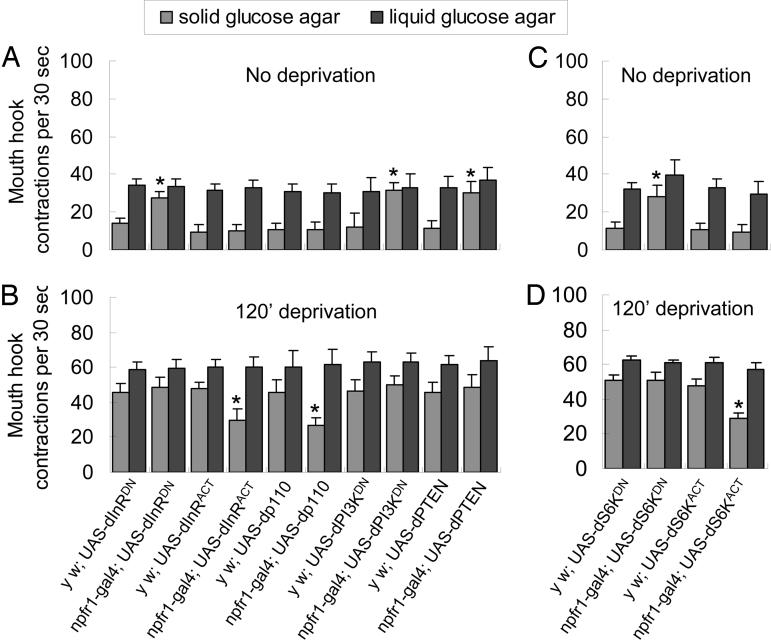Fig. 3.
The dInR and dS6K activities in NPFR1 neurons selectively regulate food selection. The npfr1-gal4 is in a y w background, whereas all of the UAS line are in a w background. (A and B) UAS-dInRDN and UAS-dInRACT each encodes a dominant-negative and a constitutively active form of dInR. UAS-dp110 and UAS-dPI3KDN encode a catalytic subunit and a dominant-negative form of dPI3K, respectively. UAS-dPTEN encodes WT dPTEN. Control larvae: yw × UAS-dInRDN, UAS-dInRACT, UAS-dp110, UAS-dPI3KDN, and UAS-dPTEN. Experimental larvae: npfr1-gal4 × UAS-dInRDN, UAS-dInRACT, UAS-dp110, UAS-dPI3KDN, and UAS-dPTEN. At least 20 larvae per group were assayed in three separate trials. Fed larvae expressing transgenes (dInRDN, dPI3KDN, or dPTEN) that suppress dInR signaling in NPFR1 neurons showed significant feeding of the solid food (P < 0.0001), whereas deprived larvae expressing transgenes (dInRACT or Dp110) that enhance dInR signaling displayed attenuated feeding of the solid but not liquid food (P < 0.0001). (C and D) Control larvae: yw × UAS-dS6KDN, yw × UAS-dS6KACT. Experimental larvae: npfr1-gal4 × UAS-dS6KDN, npfr1-gal4 × UAS-dS6KACT. Larvae expressing dS6KDN in NPFR1 cells showed significant feeding of the solid but not liquid food (P < 0.0001) without deprivation, whereas fasted larvae expressing dS6KACT displayed attenuated feeding of the solid but not liquid food (P < 0.0001).

